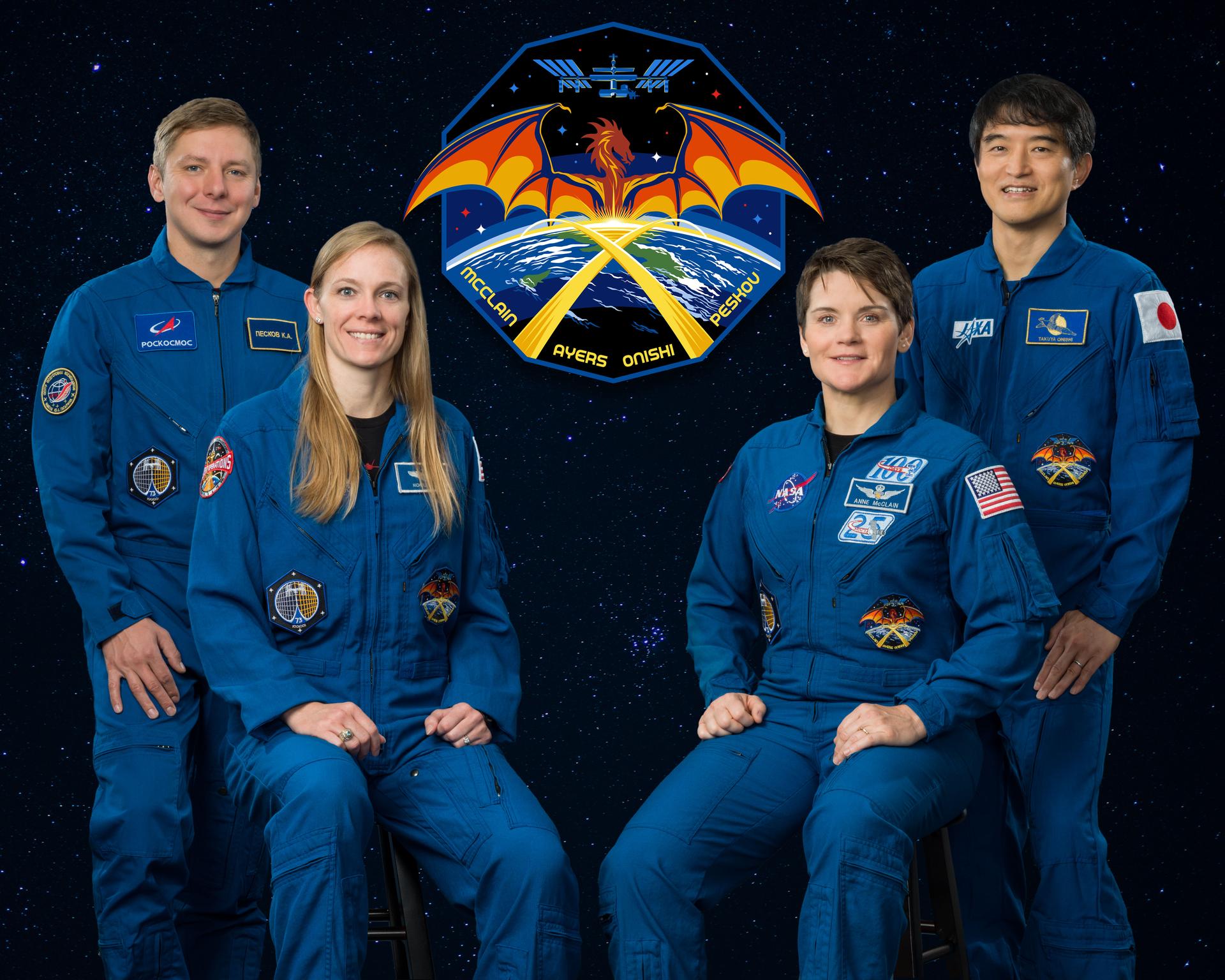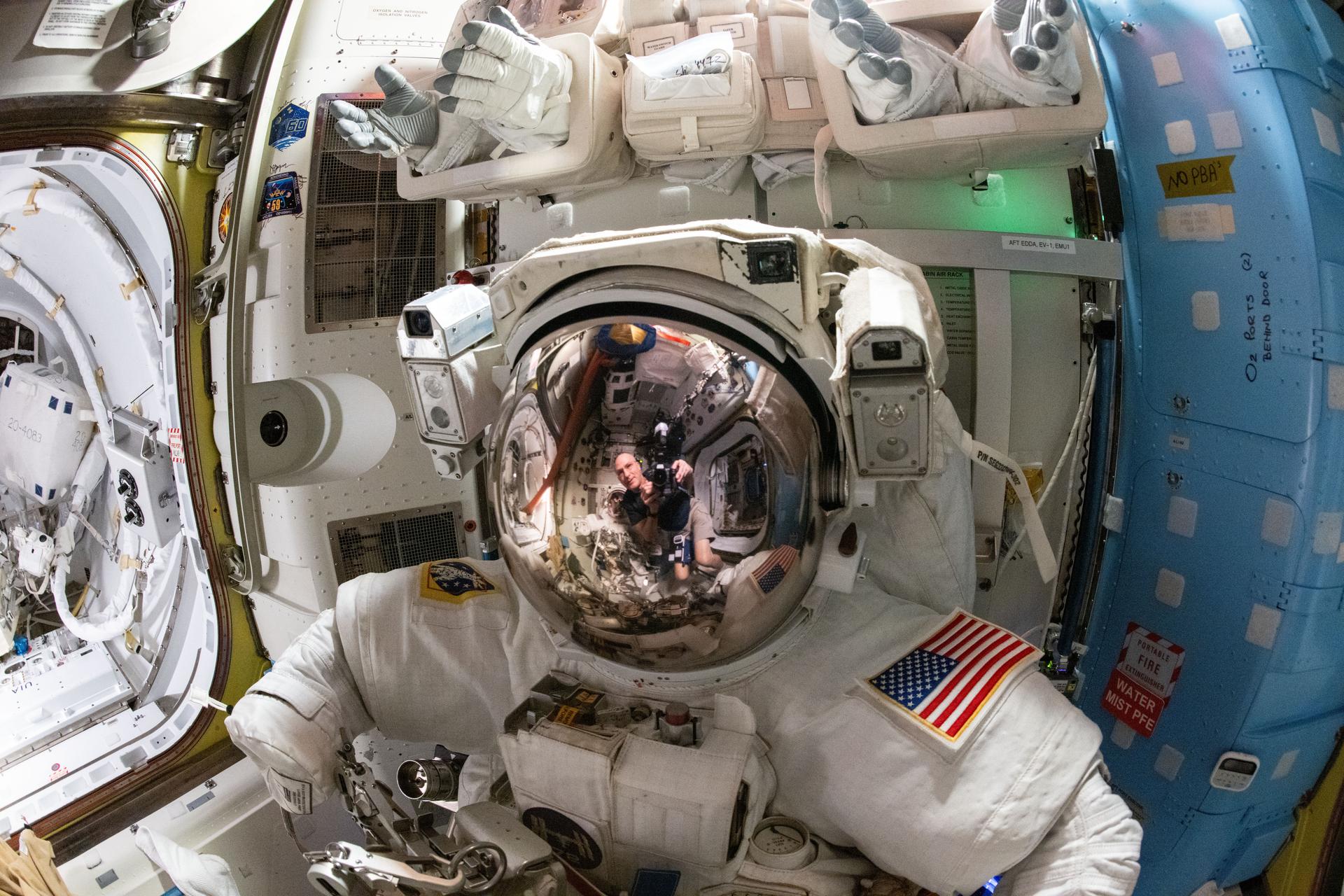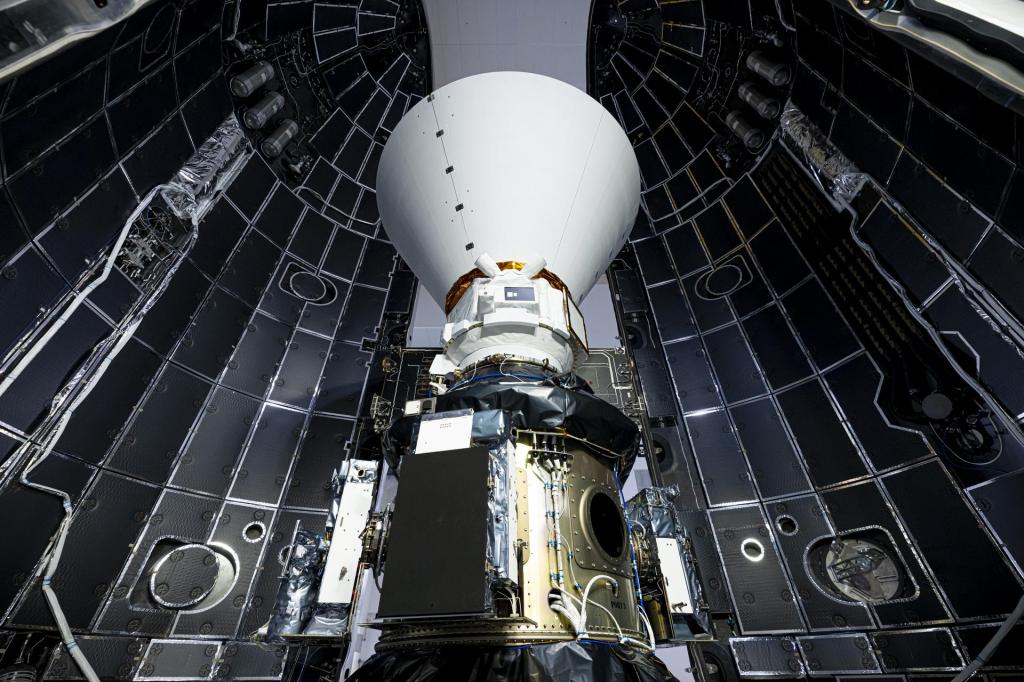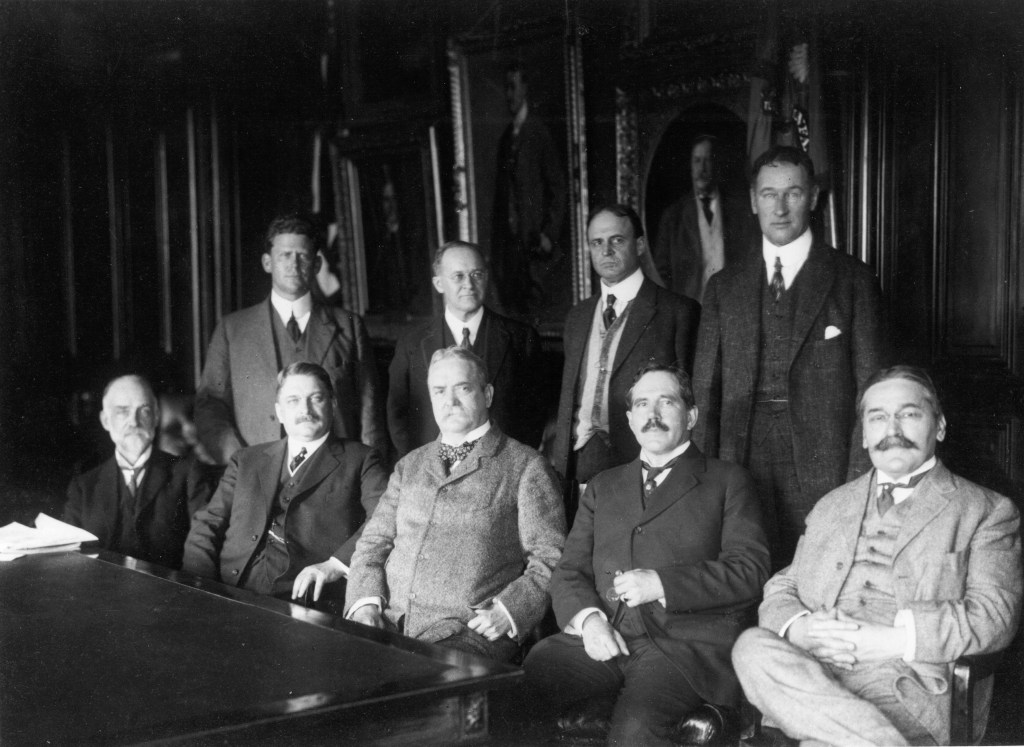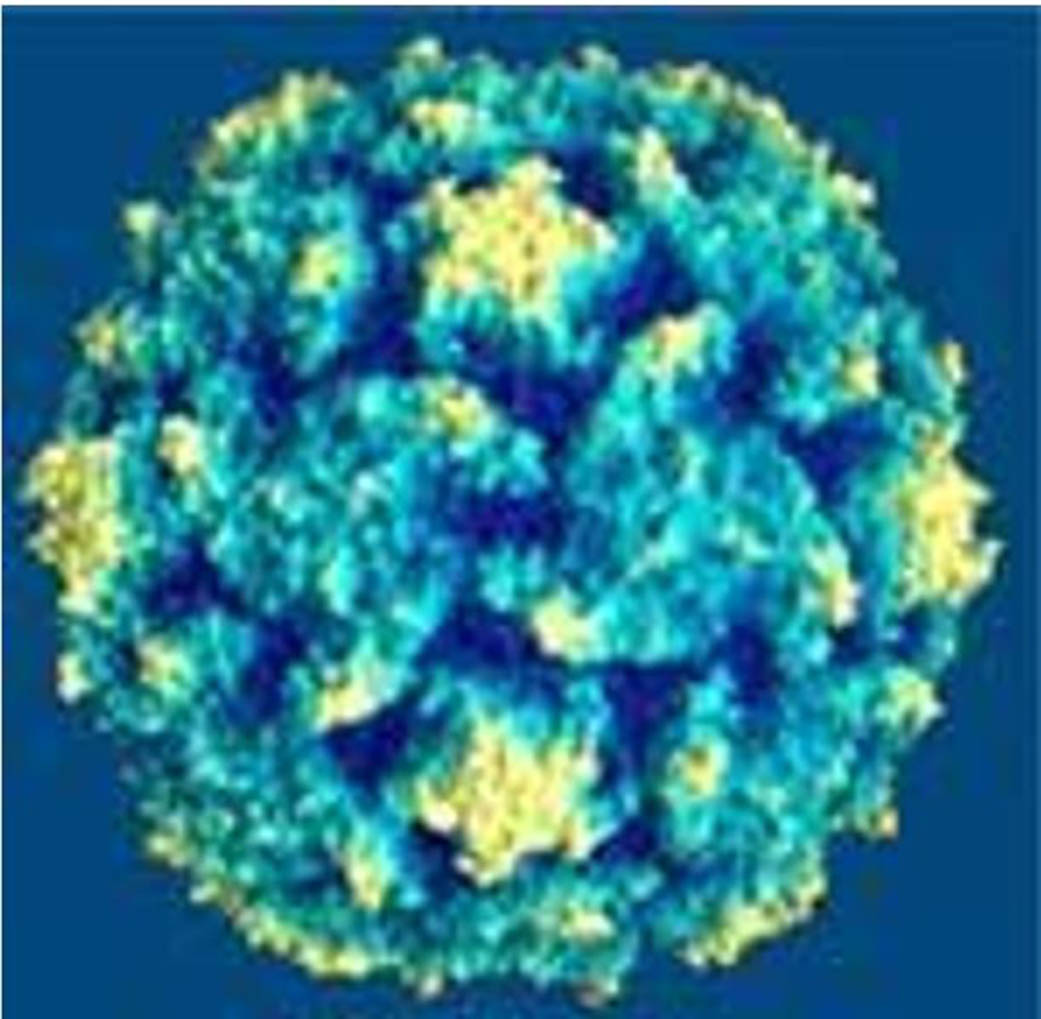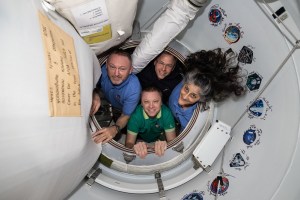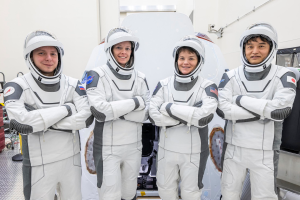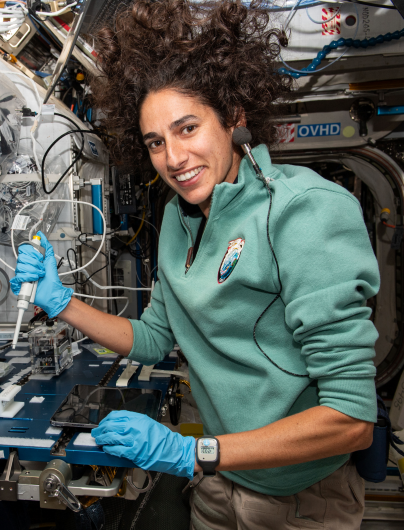In preparation for continued human spaceflight missions farther into space to the Moon and Mars, NASA continues to investigate how the human immune system reacts in spaceflight. Certain viruses, such as the Varicella Zoster Virus (VZV) that causes chickenpox in childhood or shingles in adults, are not fully eliminated from one’s body. The immune system controls them and maintains the virus in a “dormant” state in the spinal cord nerve cells of the body. These viruses can intermittently “awaken,” or reactivate, starting to grow and multiply. Most times this happens, the person experiences no symptoms or overt illness; however, it is more commonly seen in elderly people and in people whose immune systems are compromised that the reactivation does cause disease. It is believed that stressful life situations causes the viral reactivating.
NASA research published in Frontiers in Microbiology, extends previous NASA research that these latent virus strains can reactivate in people who spend time in space. This reactivation is typically “subclinical” in astronauts, meaning they are not truly sick and do not exhibit symptoms. However, the presence of the active viruses is a good indicator that those astronauts are experiencing reduced immunity during a space mission.
NASA is using a process Dr. Satish K. Mehta of KBR Wyle at NASA’s Johnson Space Center developed for rapid viral detection systems and is beginning to test immune boosters, or countermeasures, for astronauts for future deep space missions—work that could also benefit patients with decreased immunity on Earth.
Dormant viruses can reactivate in anyone, not just astronauts
“NASA astronauts endure weeks, or even months, of constant microgravity and radiation—not to mention the increased G forces of take-off and re-entry,” said senior author Dr. Mehta. “This physical challenge is compounded by more familiar stressors like social separation, confinement and an altered sleep-wake cycle.”
To study the physiological impact of spaceflight, Mehta and his colleagues analyze saliva, blood and urine samples collected from astronauts before, during and after spaceflight.
“During spaceflight, there is a rise in the secretion of stress hormones like cortisol and adrenaline, which are known to change the immune system,” Mehta said. “In keeping with this, we find astronauts’ immune cells—particularly those that normally suppress and eliminate viruses—become less effective during spaceflight, and sometimes for up to 60 days after they return home to Earth.”
The observable presence of the reactivated virus, or viral shedding, as seen in the astronauts has typically been asymptomatic. “Only six of all astronauts with viral reactivation developed any symptoms,” Mehta said. “All symptoms were minor.”
Overall, four of the eight known human herpes viruses – including the variety responsible for chickenpox and shingles (VZV) – were detected in astronauts during their stay in space. Herpes viruses often remain dormant in nerve or immune cells throughout a lifetime.
As NASA has plans to go forward to the Moon and beyond, international space immunologists and virologists are characterizing this phenomenon using the space station as a microgravity testbed, as well as here on Earth in isolated conditions. Understanding how these viruses behave in astronauts on the International Space Station will allow researchers to develop countermeasures that will be needed for long-duration missions.
“The ideal countermeasure is vaccination for astronauts—but, so far, this is available only against one variety of the eight herpes viruses, VZV,” Mehta said.
NASA’s present focus is to develop targeted treatment regimens for individuals experiencing virus reactivation.
Mehta reiterates that this research has tremendous clinical relevance for patients on Earth, too. Already, spaceflight-developed processes for rapid viral detection in saliva have been employed in clinics and hospitals around the world.
______
NASA’s Human Research Program, or HRP, pursues the best methods and technologies to support safe, productive human space travel. Through science conducted in laboratories, ground-based analogs, and the International Space Station, HRP scrutinizes how spaceflight affects human bodies and behaviors. Such research drives HRP’s quest to innovate ways that keep astronauts healthy and mission-ready as space travel expands to the Moon, Mars, and beyond.




